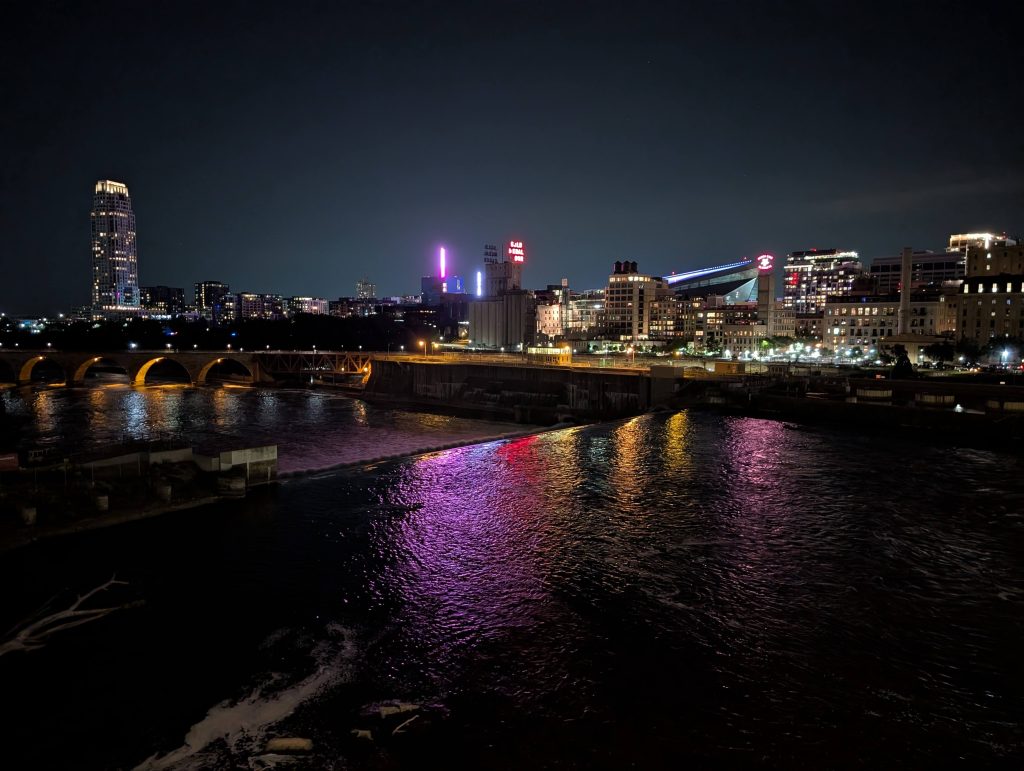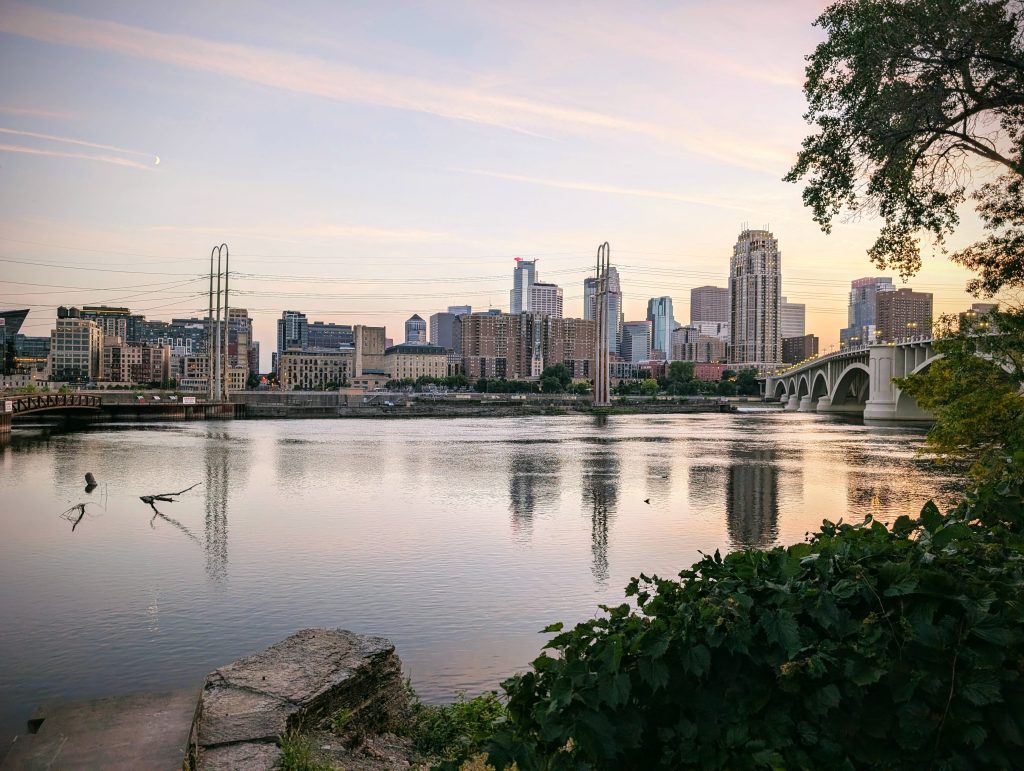I was out walking in the evening near the downtown, and heard a group of people describe Minneapolis as “small and boring.” They were from Orlando. I was insulted, downtown Orlando is even less nice from what I had seen, and the metro area population is even smaller (2.5 mil vs 3.5 mil for MSP). While Minneapolis is definitely not on the list of world’s greatest travel destinations, as far as American cities go it can be a pretty nice place to spend a few days, if you know where to go.
First thing to know is that Minneapolis and St. Paul (MSP) are together called the “Twin Cities” or just “the Cities” by people around here. It is the dominant metro for all of Minnesota, a large part of Wisconsin, the Dakotas, and even parts of Iowa. Partly we tend to think highly of Minneapolis because as far as cities go, there is nothing else that evenly remotely compares between Chicago and Seattle, and I would take Minneapolis over Chicago too.
One problem with the Twin Cities is that being a binary star system, centers of gravity tend to get a bit odd. This combines with the driving rather than walkable focus of American cities to mean that the skyscraper areas are actually often boring, you need to know where to find the good stuff.
The thing that Minneapolis really stands out for is nature and parks, but let us first look at the traditional things to do here. The Twin Cities have all the things you could expect of a major metro. There are all the sports teams, there are all the museums, there are all the cultural and event centers. It is a big enough city to have two tiers of everything as well, the main theater (the Guthrie) and smaller community theaters, the big baseball team (Twins) and the minor league (St Paul Saints at CHS Field), bigger music venues (First Avenue, the Armory) and live music at restaurants and parks, and so on. I will call out just a few of these here, but know that there is something for every interest you can find if you look.
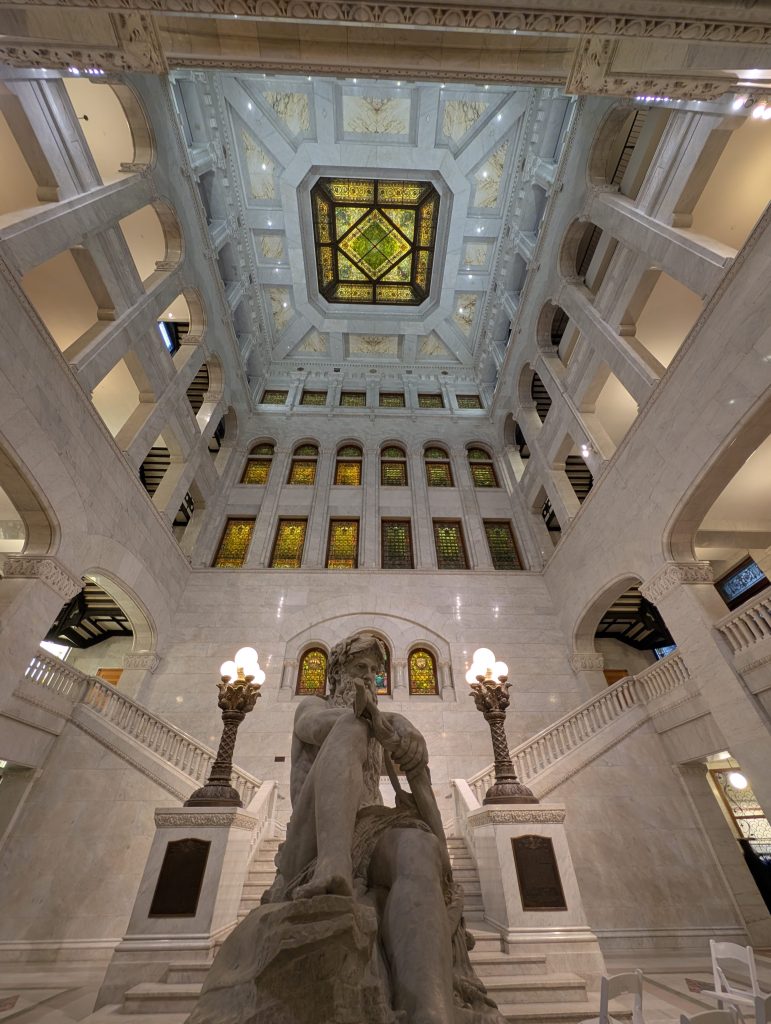
Let’s start with the Mall of America. It is a good place to start because it is a short train ride from the airport, and could easily be done on a long flight layover (and has lots of free parking). What you get is a mall with a giant open space full of roller coasters in the middle, plus lots of restaurants, and some other things like cinema and aquarium. We like grabbing food and watching planes take off from the big windows on the north side of the top floor. The biggest perk of this place is that it is very winter friendly. You get to stroll around as if you were outdoors, but inside a brightly lit and warm space. While not particularly unusual in what it offers, it is probably the safest bet of places to visit in Minneapolis, from young families to older couples.
As I write this, I’ve been to 38 countries, and seen many of the world’s top art museums and gardens (the latter being a particular interested of mine). From that perspective, I have always been very happy with the Minneapolis Institute of Art (MIA). It is a world class art museum that happens to be free to enter. It also has some neat events (Art in Bloom) and a nice park outside. It is a good collection and a good experience, not stressful or hectic or sterile like some great art museums are. Good in both winter and summer.
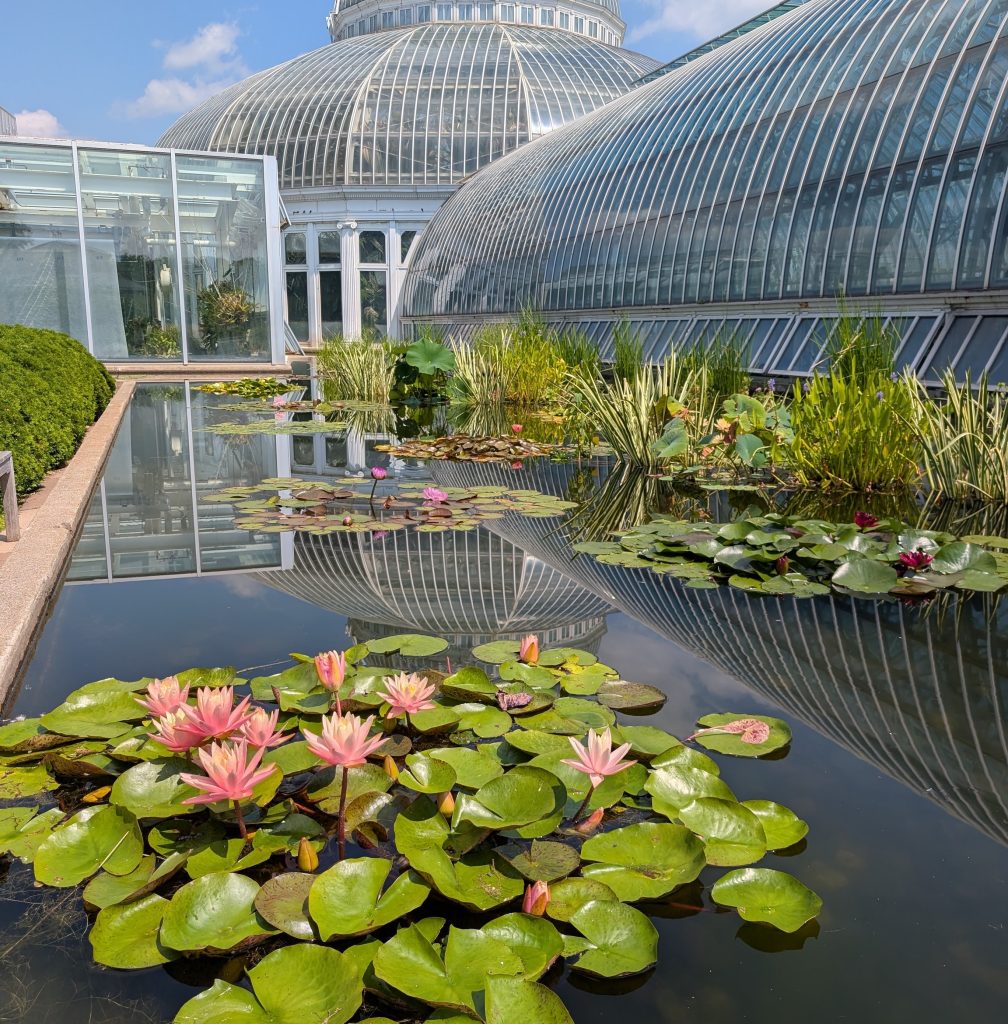
Another on this list is the Como Conservatory. I’ll take that over the Kew Gardens any day. It is a tropical paradise in winter, and the zoo and park are great in summer. The Sunken Garden is always a star, the fern room relaxing, the spice room intriguing, and they have a fabulous bonsai collection (of which only a few are usually visible at any time, same with the orchids). And just like the MIA, it is always free to enter. The only problem is it can get rather crowded on weekends. If this is your kind of thing, the Minnesota Landscape Arboretum is also worth considering, where many plant cultivars like the Honeycrisp Apple were developed.
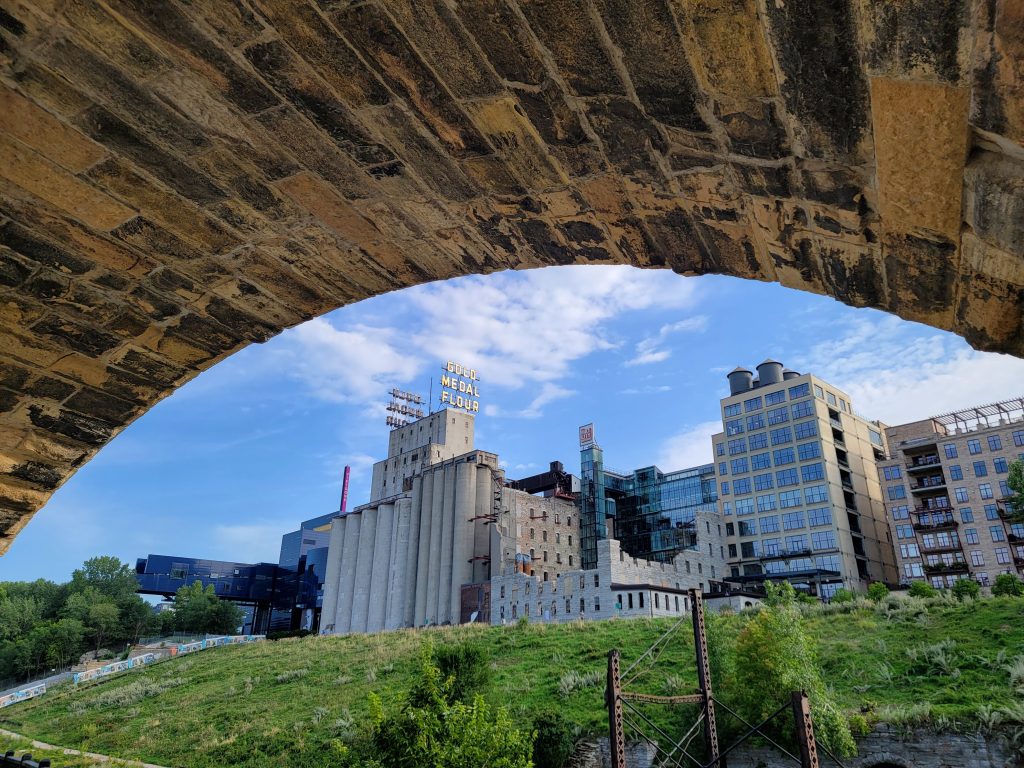
One other museum to call out is the Mill City Museum. While not really a must-see, it does provide a good local focus on a critical part of Minneapolis’s history, and is a good recommendation for anyone who likes baking. Right next door is the Guthrie. Even if you aren’t seeing a play, walk out on the big cantilevered balcony, which is open to the public.
Both the Guthrie and the Mill City Museum are right on what I consider the heart of Minneapolis. My must see of Minneapolis is the Stone Arch Bridge. Walk across this and stare across at the St Antony Falls, and back at the downtown.
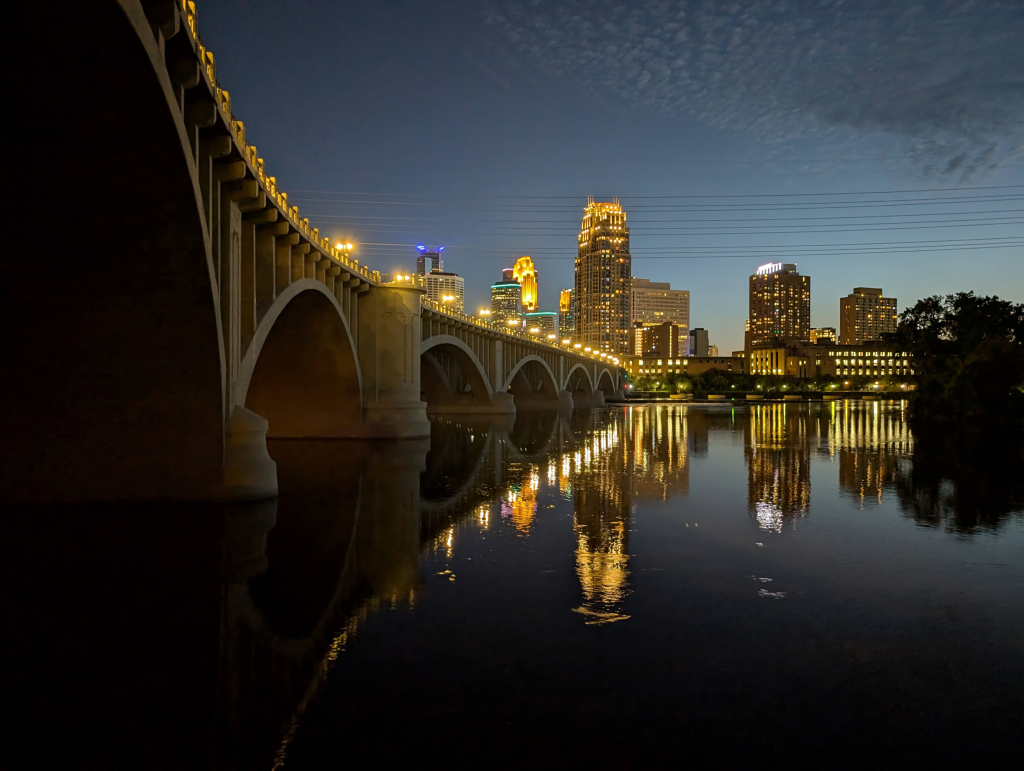
Once you are across the Stone Arch Bridge, on the east bank, is the cobbled street of Saint Antony Main. This is my best date night recommendation, of walk, dinner, and possibly cinema. There are several restaurants clustered here around the Aster Cafe, all are pretty good, reservations often needed on weekends (but these aren’t true fancy restaurants, still pretty casual). The Main Cinema is right here a smaller, artsy cinema, with cheap tickets on Tuesdays. Also near here I can recommend the Nicollet Island Inn for a dinner, or walk a little further to Kramarczuk’s, Punch Pizza, and Fletcher’s Ice Cream, along with countless more restaurants of NE Minneapolis.
If you like longer walks (1 hour moving fast) there are two nice loops that include the Stone Arch Bridge. One is up through Boom Island Park and Graco Park (making sure to go there via Nicollet Island across two smaller bridges) and across the Plymouth Bridge, then back along the Mississippi River Trail (one variation like this). In particular, the restored island and park at Graco Park are excellent examples of restoring some of the prairie and nature that used to be here more.
Another nice walk from the downtown requires heading south east from the end of the Stone Arch Bridge. There is a service road with a “service vehicles only” sign, ignore the sign, everyone does, walk along a bit of gravel and some train tracks (a dead end spur, so safe) to the edge of the (huge) University of Minnesota campus, then walk down the campus mall (enter Northrop or the Walter Library if open), cross either the Washington Ave or No 9 bridge, then back along the river trails there to Gold Medal Park. Two variations on this theme here and here.
Speaking of walks, another Minneapolis gem is the Chain of Lakes. Lake of the Isles (Isle Bun and Coffee nearby) is my favorite, Bde Maka Ska, Harriet, then over a bit to Nokomis. These lakes actually connect to Minnehaha Creek and Falls, if you fancy a bike ride you can do a nice loop, Greenway to Chain of Lakes to Minnehaha then back up the river (the annual marathon covers much of this loop too, but for riding I think I prefer just the Mississippi River Trail). Minnehaha Falls are just average as waterfalls go (Iceland and New Zealand have ruined it for me), in my opinion, but I like the park. Lakewood Cemetery here has a nice Byzantine-inspired chapel, and checkout the memorials such as this one. All of these lakes often have associated events, music at the band shells, yoga, boating, ice skating, and so on.
One place I would like to recommend is the Loppet Trailhead at Theodore Wirth. Theodore Wirth Park has two great little walks (Eloise Butler Wildflower Center and the Quaking Bog). The Loppet adds tons of outdoor equipment rentals and classes. Mountain bikes in summer, and nordic skis, snowshoes, and sledding hill with tow rope in winter. While the outdoor quality isn’t quite as good as further out in the state, it is still fun, and only 10 minutes or so from the downtown, it is a taste of the real Minnesotan outdoors experience that is easy to access fro the city.
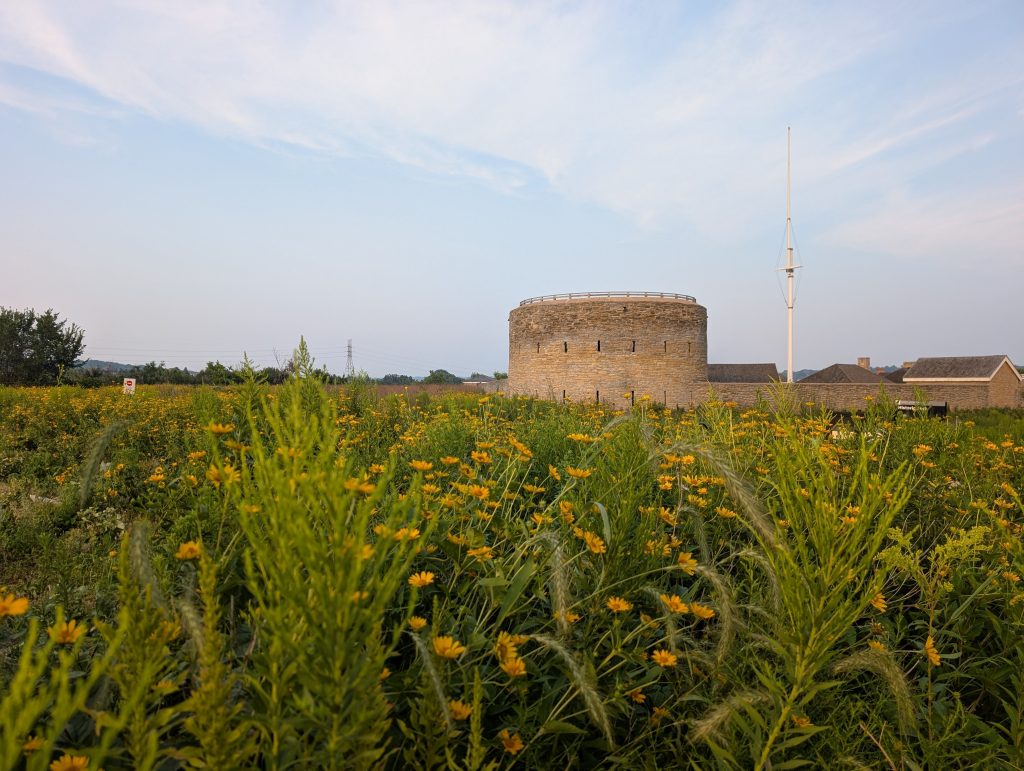
One thing that I love about living in Minneapolis is how many places in the heart of the city you can go to which feel a bit like wilderness. Perhaps the best example of this is Pike Island just below Fort Snelling (a nice attraction in itself) although this has been increasing “discovered” and is getting busier. For secluded vibes, I also like the elevated board walk trail along the river that starts just east and south of the University of Minnesota Boathouse (this is less discovered and can be eerily quiet sometimes). For closest to the downtown, the lower trail of Father Hennepin park, just north of the east side of the Stone Arch Bridge, is a good natural spot.
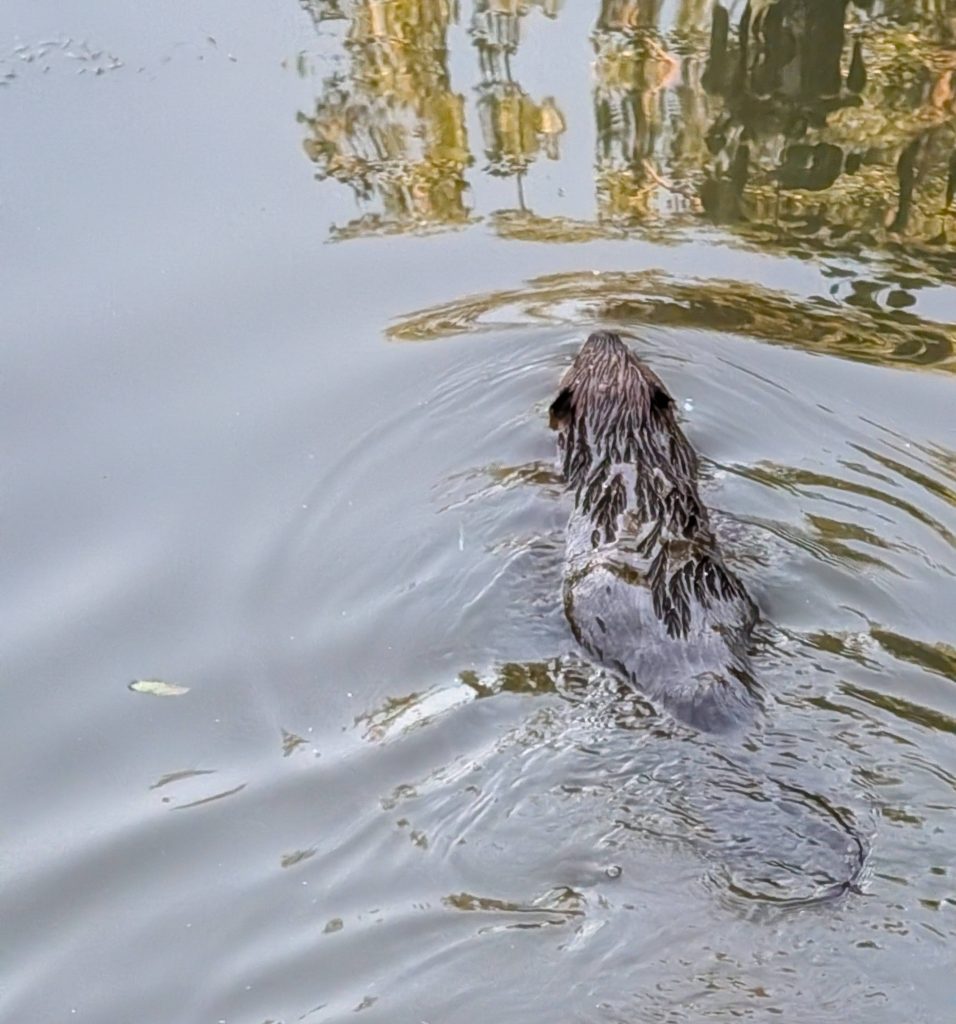
Along those lines, caves are a long part of MSP history. Most are sealed up. Wabasha Street Caves are a tourist site, and Echo Cave is the most officially accessible of the remaining ones. Near Echo Cave, Brickyard Trail also has a place where you are allowed to pick up fossils, although there’s a chance these might get closed down soon. Crosby Park river shore apparently also has some fossils too
Let me quickly call out a few other nice spots:
- Walker Art Center / Minneapolis Sculpture Garden / Loring Park (Four Seasons Dance Studio one of the larger dance class places here). Classic postcard photo here.
- Summit Avenue with grand old houses near St Paul, and Grand Avenue with two of my favorite cafes (Bread and Chocolate and Cafe Latte (excellent cakes))
- Saint Antony Park (Colossal Cafe and Finnish Bistro nice place for brunch, some shops, and a short peaceful walk)
- Allianz Field (Intersection of University and Snelling) is a up and coming area, giant Loon statue, although I wouldn’t visit unless you also plan to see a soccer game.
St Paul has always struggled to have as much to do as Minneapolis, and can feel rather empty sometimes. I do have a few things here. As a kid, I always liked the St Paul Farmer’s Market (weekends), the Science Museum of Minnesota, and Minnesota History Center. Cossetta is a good restaurant, often packed after hockey games. The State Capital has interesting tours, and the cathedral is a giant cathedral. You can catch trains from here to Chicago, which is a low stress way to travel there, and also trains to Seattle and Glacier National Park (although the trip to Seattle is ages, something like 40 hours long). Glacier has stations on either end, so you can ride to one, and then ride back from the other after a hike.
Like all American cities, there is a mixed immigrant community here that has setup their own community centers and shops. These are often worth checking out for something a bit different, especially lots of ethnic food scattered around. Hmong Village/Market and Midtown Global Market are two destinations along these lines. Previous generation immigrant communities still have ties, like the American Swedish Institute. And if you want authentic Wisconsin, try Culver’s and Kwik Trip.
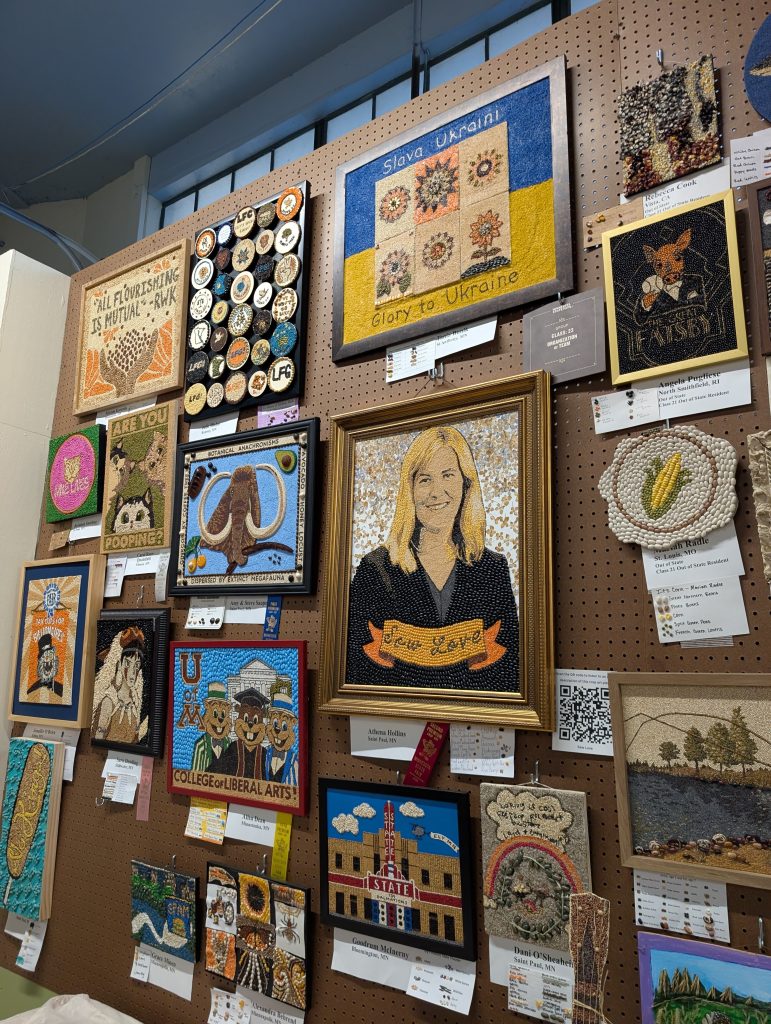
I have found in travel that events are often more memorable than just seeing sites. In the Twin Cities, the biggest is the Minnesota State Fair in August. It is the largest fair in the US by daily attendance. Some things are very unique, the crop art or llama costume contest, but there’s no good way to summarize all the things there. It’s easy to miss things there (not everything is every day) so plan ahead, and prepare to be a bit overwhelmed and exhausted, but in a good way. The Winter Carnival, on the other side of the year, is also unique. As for fireworks, the Aquatennial often has an insane show. Doors Open Minneapolis (late spring) has a lot of behind the scenes access events. There are a constant stream of smaller events and festivals every weekend, although it can be rather hard to know when they are happening, as there is no one calendar for them all. Look and you shall find something!
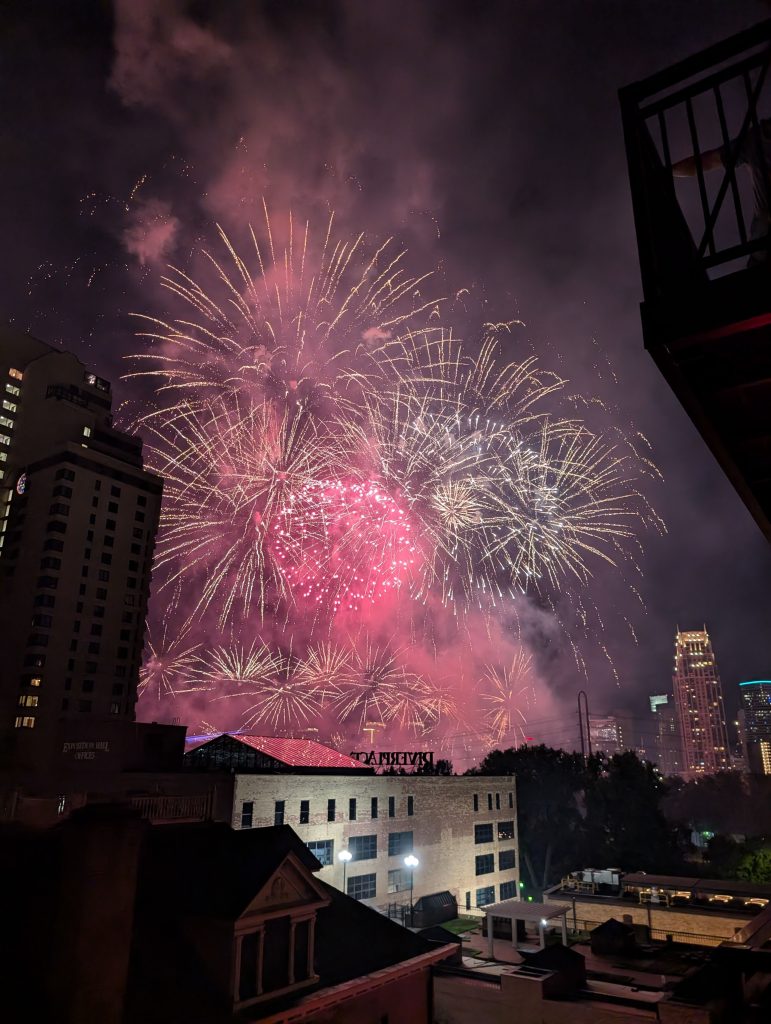
I think one thing that those people from Orlando were missing here was the nightlife. In hot climates, cities are often dead during the day and come to life at night. Here the daytime tends to be the prime time. This is partly due to weather, partly due to many people needing to drive home to the suburbs after events, so things often get pretty slow after 8 pm. In my experience, the closest thing to that nightlife you’ll find here is a Saturday night at the State Fair (end of August). Huge crowds, food, lights, and music, you’ll find it all fairly late (more 11 pm, though not 2 am). Events and game days in general are going to be more the drivers of nightlife, rather than every day. Evening sports matches and concerts can make the Target Field – Target Center – First Avenue area on Hennepin pretty lively, but not every day. Near campus (Dinkytown) can get quite lively late on a few weekends of nicer weather in fall and spring. Two of the “best bets” generally for weekend going out are going to be the North Loop (Warehouse District) and Uptown, although neither is quite my vibe.
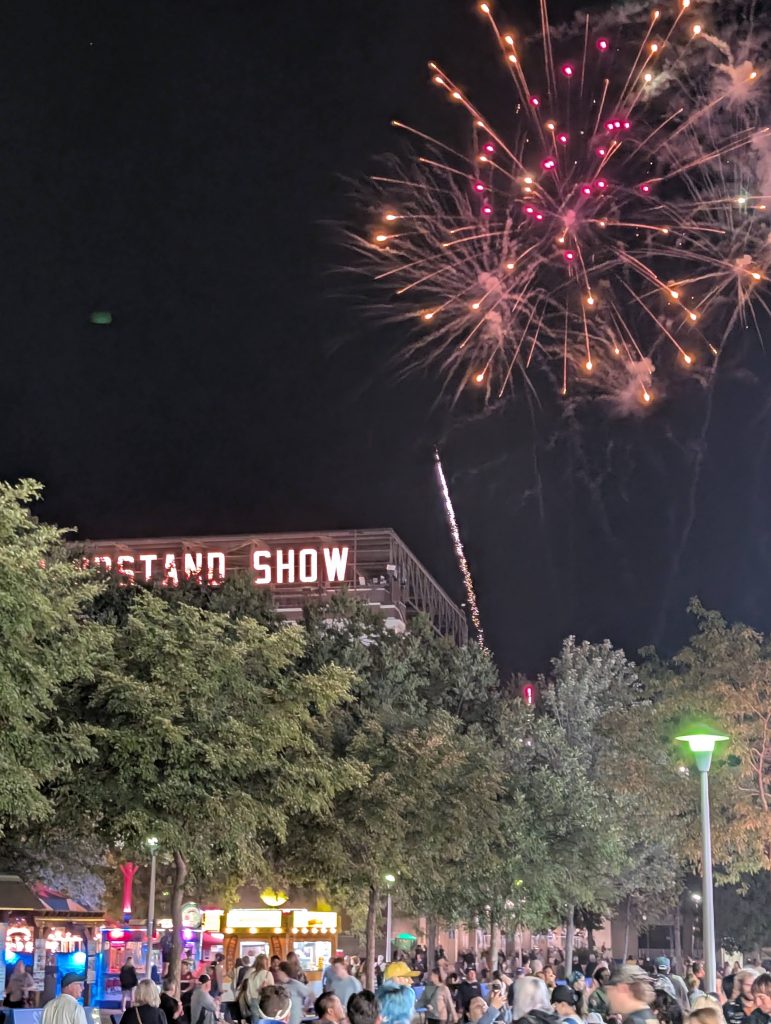
The Target Field – Target Center – First Avenue, “Theater District” on Hennepin is a great spot but it is quite close to the biggest homeless shelter, Salvation Army Harbor Light, which some people will find dampens the vibe a bit of the area. There tends to be a solid police presence, so I wouldn’t call it particularly dangerous, but it is not setting the mood well either. If I was the city, I think moving that shelter a few blocks west or north would be a big improvement, and then find a better way to bridge that neighborhood to the North Loop where 394 and the parking ramps fill in right now, rather than trying to revive Nicollet Mall (which was the hotspot over a 100 years ago, and some planners seem to think should be revived).
One question you might have are, where are the bad neighborhoods? Traditionally the worst gang violence is in north west Minneapolis, say between Broadway and Lowry. There isn’t much reason to go here as a tourist, though, so not a worry. I bike through here occasionally and it isn’t a war zone, but is riskier than other areas. Just around and mostly south of I-94 in Minneapolis and similarly north of I-94 in St Paul (both to east and west but stretching a bit more east along 94) are some lower income communities that have fairly high crime, although more on the theft side mostly.
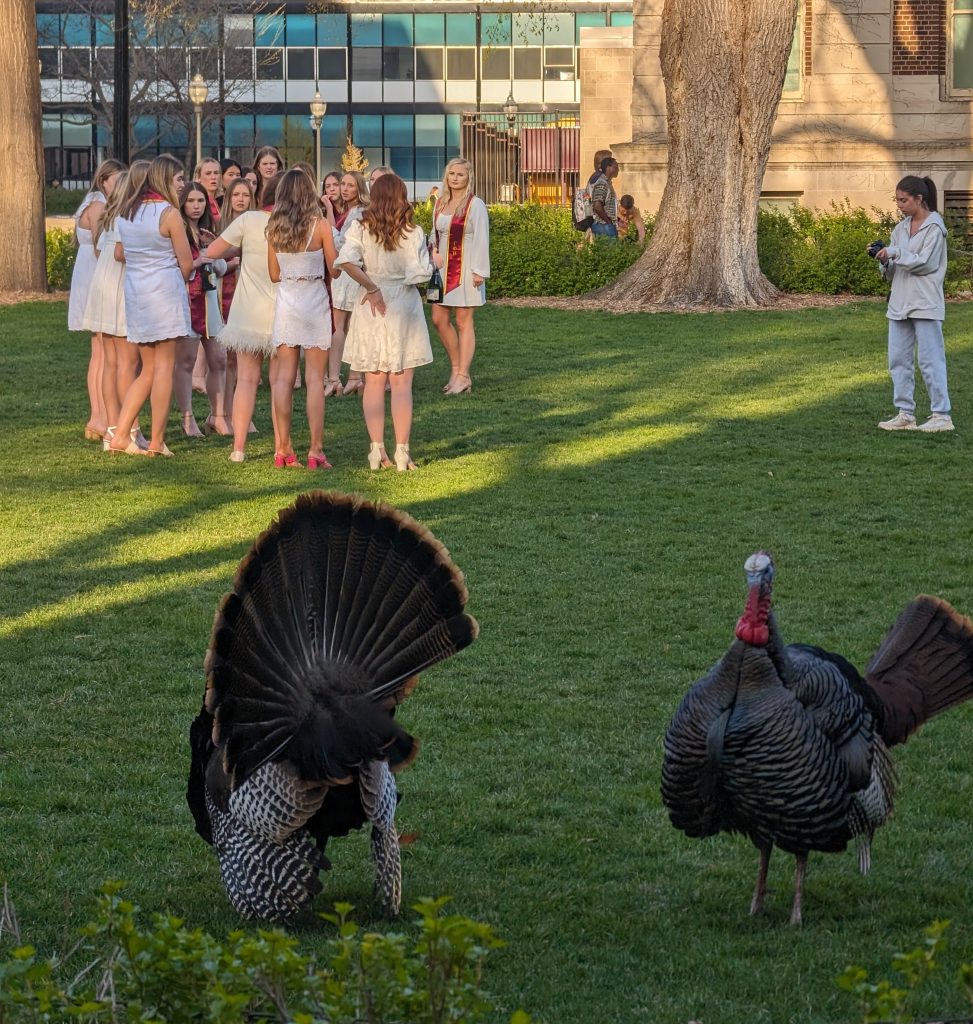
I am not going to give much detail on the rest of Minnesota, but here are a few starters. There is driving out to regional parks and lakes, cute small towns, and downhill ski resorts (decent but not true mountains). Classic Minnesota is the North Shore (Duluth on up), and of course the Boundary Waters (BWCA). Pipestone National Monument is excellent history, and Soudan Mine is neat if a bit terrifying. South, the Driftless region has some good hikes, and especially cycling (gravel on MN side, tarmac on the WI side). Lake Pepin has cute towns and the nice river in the bluffs.
Most Americans are going to be most comfortable here with a rental car, but I would personally skip the car – parking in most of the more exciting areas, while not impossible like some cities, adds stress and cost I don’t much fancy. You only need a car if you are visiting a friend or something in the outer suburbs, but as a tourist there isn’t much reason to go out that far.
I walk and cycle here a lot, and the city is great for both. The light rail line is the best transit, forming a “V” shape connecting the airport to downtowns. Bus service on the named “lines” (Gold Line, A Line) is also pretty good, but the other routes tend to be too infrequent to be convenient, most people will probably end up using ride hailing apps (Uber, no self driving cars as I write this, but good chance they are here by the time you read this) heavily if going car free, and that usually works well. Google Maps generally has bike routes, walking directions, and metro times pretty reliably here.
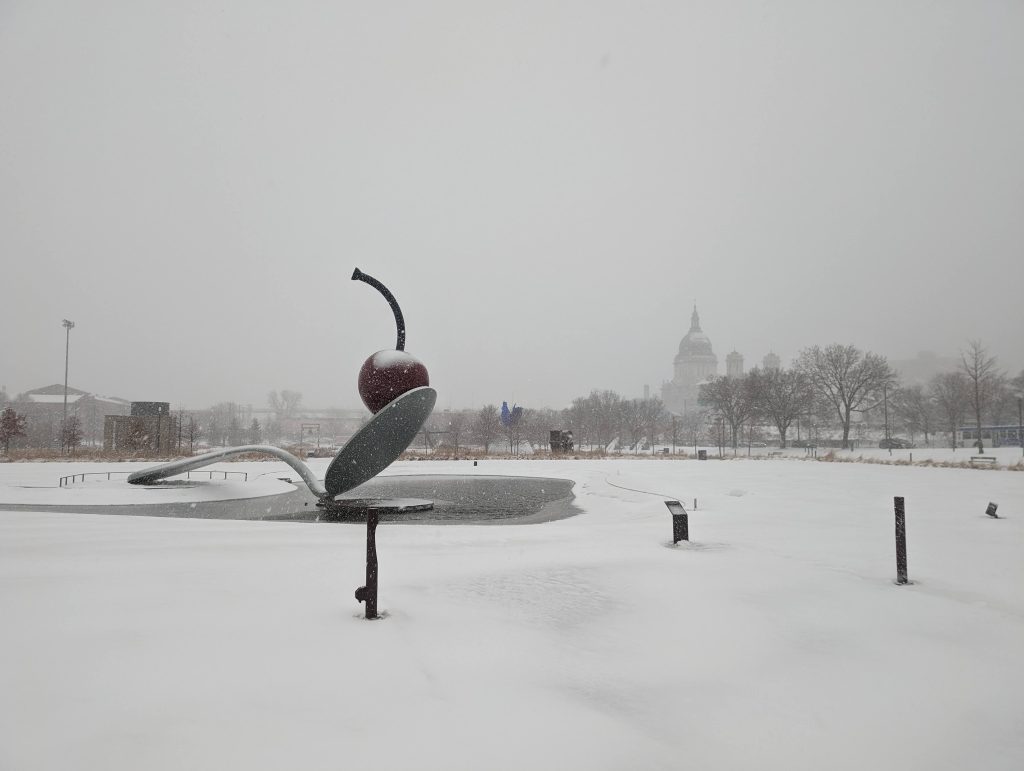
Some people seem to think Minnesota is cold all the time. Quite the opposite, summer can be quite hot. Usually May to September is quite nice. Fall and spring can be quite variable, usually plenty of good days mixed in with less nice. People from warmer climates talk about “damp cold” as being the worse form of cold, but real cold is almost always very dry. Instead we worry about wind chill. In winter, don’t look so much at the actual temperature as the sun and wind. If it will be calm and sunny, it can be quite pleasant even if the actual temperature is very cold, but if it is windy and cloudy, it can be miserable even in much warmer temperatures. As a tourist, always overdress in winter, cover all skin, wear layers and proper shoes (sneakers are often fine, but can get wet). We actually don’t have that much snow in Minneapolis, and it really varies year to year how much we get.
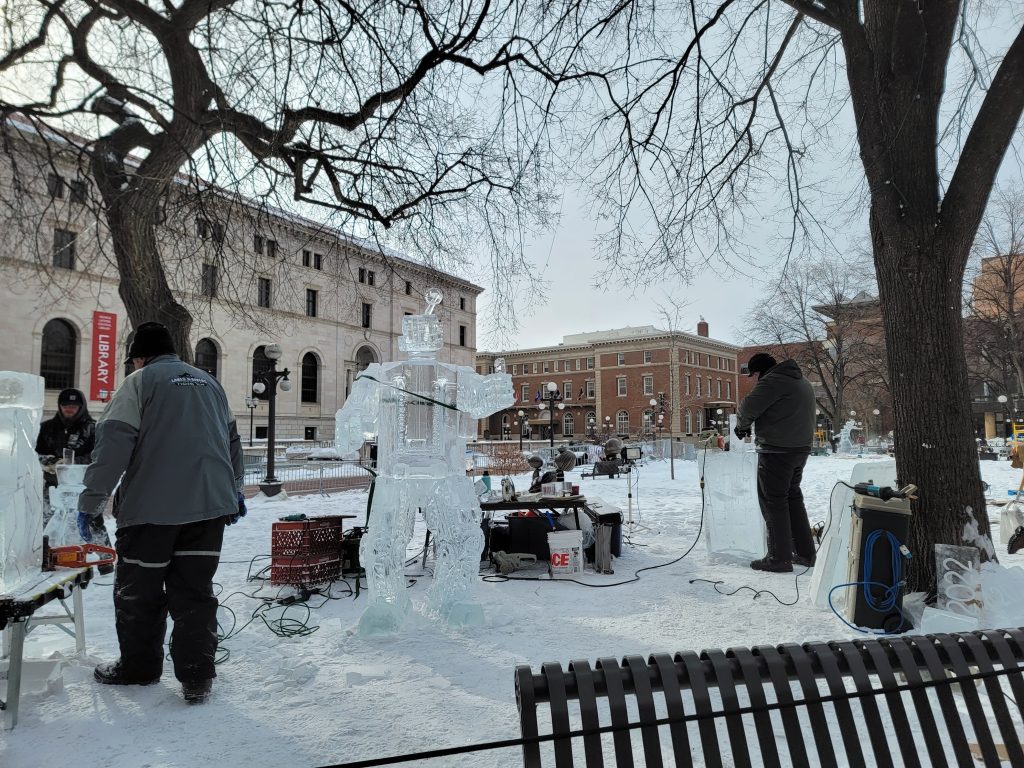
Minneapolis has the unique Skyway system for traversing the downtown in winter without going outside. It is, however, a bit of a maze. And large parts of it close outside of business hours, so it is really only useful during the middle of weekdays.
This really is no where near a complete list of things to do around the Twin Cities. There are countless restaurants, shops, and attractions not mentioned here. The Minneapolis St Paul magazine, Atlas Obscura, the city and county websites (particularly for park events and festivals, for example), and of course social media all can provide more. As always, start with your own interests, and explore out from there. Proper planning, and properly calibrated expectations, are two keys to enjoyment in travel. I hope you find something to love,
Colin Catlin, 2025
